|
Archaeology and Popular Culture |
In a 1993 book titled ” Peaks of Limuria” Richard Edlis who had
been Commissioner for the British Indian Ocean Territory, casually noted that
the islands under his stewardship "comprise all that remains above
sea-level of huge underwater mountains of volcanic origin which rear
dramatically from the ocean bed 10,000 feet or more below” (p.ix).
Similarly in Theosophical books, with which many Tamil place-makers were
undoubtedly familiar because of the visibility of these occultists in the
Madras Presidency, the name had come to be associated with a continent
inhabited by proto-human beings, and re-interpreted as the Kumarinâtu
of Tamil literature.
From the 1870’s, several European
ethnologists, especially those with a connection to British India, favored
India as the cradle of mankind. And even Ernst Haeckel in 1876 considered this
a possibility which came to the attention of Tamil's devotees. The principal
term used to designate the catastrophic and destructive agency of the ocean in
Tamil devotion's labors of loss initially however was katalkôl,
a word that has attained the same status among its place-makers that was
accorded to "the Deluge" or "the Flood" in the discourses
of the Judeo-Christian West well into the early decades of the nineteenth
century." Literally, "seizure by the sea," katalkôl
is frequently glossed in English as "flood," "ocean swell,"
and, significantly, as "deluge," or even "Deluge." All of
Tamil devotion's ocean fears and fantasies turn around this word, which is
used, over and again, to describe the actions of the "cruel sea" in
its labors of loss. It is because of katalkôl that
Tamil speakers irrevocably lost their patrimony as embodied in their
antediluvian words and works as these had been nurtured in their ancestral
homeland. Instead of sustaining Tamil homes and hearths today, their patrimony
lies consigned to a "watery grave" at the bottom of the Indian Ocean.
Then from the closing
years of the nineteenth century, similar lamentations about the
"countless" and "numerous" precious Tamil books and
"literary treasures" that met "a watery grave" are a
constant refrain of Tamil literature. These works were the creations, devotees
insist, of the 4,449 poets who had graced the first literary academy (cankam) in the antediluvial city of Tenmaturai,
and of the 3,700 bards of the second academy in the drowned city of Kapâtapuram. When these cities and their learned academies
were washed away by the ocean, they took with them-forever-these poets and
their works. While most do not venture to enumerate the books that are believed
to have been destroyed, settling instead for generic invocations of
"innumerable" and "many," some more daringly name names and
even discuss their contents. As early as 1887 C. W. Damodaram
Pillai (1832-1901) published many a forgotten Tamil literary work-wrote
poignantly of the lost texts of which he had heard when he was young and that
were no longer available in his time. These had been primarily lost to the
flood that had seized the second cadkam at Kapatapuram, but other forces, including gross negligence,
had been at work as well. And in 1903, drawing upon a Tamil commentarial
tradition that over the centuries had kept alive some memory of lost treatises,
a book titled the Suryanarayana Sastri recounted that works such as Mutunârai, Mutukuruku, Mâpuran am, and Putupurânam had
been seized by the ocean (p. 94-102).
Soon after, in 1917,
Abraham Pandither, in his massive history of Tamil
music, insisted that several of these lost works, such as Naratiyam,
Perunârai, and Perunkuruku,
had been the world's first treaties on music, all of which had disappeared into
the ocean along with several rare musical instruments like the
thousand-stringed lute. Thudisaikizhar Chidambaranar (1883-1954), a retired petty bureaucrat,
pointed to the loss of rare grammatical works, the first in the world.
There are many
reasons that make Lemuria's candidacy as the ancestral Tamil homeland so
attractive to Tamil devotion's place-making. It had been identified by
metropolitan scientists as a vast ancient continent and as the birthplace of
mankind: if Tamil speakers were the original inhabitants of Lemuria, this made
them, ipso facto, the most ancient peoples of the world and the ancestors of
all of humanity. As many insisted, with the sinking of the ancestral homeland,
Tamilians fanned out to the rest of the world, setding
and planting the seeds of civilization in the Indus Valley, Mesopotamia, Egypt,
China, the Americas, even Europe. Consequently, Lemuria allows Tamil labors of
loss to fashion a diaspora for Tamil and its speakers that was as widespread as
it was ancient, stretching back to the very beginning of time, in fact. It
allows modern Tamilians to assume the status of global peoples, if only
vicariously, in an age of global empires and the exercise of global power.
Furthermore, the
appropriation of Lemuria for the Tamil cause also enables the recasting of
modern Tamil speakers as descendants of an antediluvian people. This allows
Tamil writers to tap into all the symbolic potency-innocence, purity, and
singularity-associated with prelapsarian virtue and bliss. Lemuria thus
provides a context for summoning into existence a Tamil prelapsarium,
further deepening the antiquity of the language and its speakers, the first in
the subcontinent as well as in the entire inhabited world.
Even within the
community of Tamil devotees, which has been radically divided over the
meaning of Tamil and its relationship to the other languages, cultures, and
speakers of the subcontinent, most unite around the contention that Tamil is an
antediluvian language whose origins can be traced to the lost homeland of
Lemuria. Loss, therefore, is powerfully enabling in southern India, and is a
sentiment, therefore, that has to be continually fed and stoked. As Marilyn Ivy
has noted in another context, "the loss of nostalgia-that is, the loss of
the desire to long for what is lost because one has found the lost object-can
be more unwelcome than the original loss itself. Modernist nostalgia must
preserve the sense of absence and lack that motivates its desire.(Ivy,
Discourses of the Vanishing, University of Chicago Press, 1995.)
Tamil devotion's
complex and variegated ‘labors of loss’ cannot actually afford to find the lost
homeland, or to close the gap, to present the absent. To do so would mean the
end of its project, its own logic for existence. Thus the nostalgic is enamored
of distance, not of the referent itself. Nostalgia cannot be sustained without
loss. For the nostalgic to reach his or her goal of closing the gap between
resemblance and identity, lived experience would have to take place, an erasure
of the gap between sign and signified, an experience which would cancel out the
desire that is nostalgia's reason for existence Yearning for-and
mourning-the lost homeland becomes an end in itself, therefore, for a people
who imagine themselves in perpetual exile.
From the start, the
relationship of Lemuria to the lived homeland of Tamilnadu,
itself a small part of "India," is plagued by a strategic ambiguity
in Tamil place-making. Some suggest that all of what we know of as India today
had been part of Lemuria, spatially reiterating the claim that Dravidians (and
hence Tamilians) had been the original peoples of the subcontinent before they
had been driven south by "the Aryan invasion."170 Others are content
to include only peninsular India-that region of the subcontinent that colonial
ethnology proposed was populated by Dravidian speakers-in Lemuria. Still others
insist that only that part of India extending from Mount Venkatam
to Kanyakumari had ever been Part of Kumarinâtu, the
historic Tamilakam.
And yet the fact
remains, as I have already noted, that loyalty and attachment to the lived
homeland of Tamilnadu, itself a part of India, has
also to be generated, especially if Tamil's devotees want their fellow speakers
to rally together to protect and nurture their language and land-or what was
left of these after the ravages of time and after the onslaughts made on them
by rival languages and their patrons.
By the time the
speculations around Lemuria commenced in the later
half of the nineteenth century in Europe, the Flood as a global geological
event had become questionable in professional scientific circles, and from the
1840s credible geologists or natural historians were disinclined to draw upon
it to theorize the earth's deep past. Not surprisingly, the paleo-scientist
never invokes the universal Flood to account for submergence and subsidence in
his labors of loss around Lemuria. It is another measure of occultism's
contentious relationship with metropolitan science that leads its practitioners
to turn to diluvial events in their own catastrophic theories around Lemuria,
but even occult place making does not accord them the centrality that is given
them in Tamil devotion.
As an explanatory
device for global change as well, the Flood had fallen on bad times among
scientists in the metropole by the late nineteenth century. In contrast, it had
been, from the Renaissance into the Enlightenment, the central moment in the
drama of human history, to whose unveiling some of the best intellectual minds
of Europe had dedicated themselves. But the professionalization of the various
sciences in the nineteenth century had pushed the Deluge to the margins of
serious thought, where, dismissed as myth, legend, or fable, it languished as
yet another example of the magical and miracle-mongering mentality of the
pre-moderns.
The Flood, therefore,
as a geological or historical event, or even as an explanatory device, had
little credibility in disenchanted knowledge-practices, history included, by
the end of the nineteenth century. Yet, katalkôl
remained the principle engine that sustained the labors of loss that are so
important to Tamil devotion's place-making which commenced around this time.
For the Tamil place-maker, it is crucial to establish its historicity, as it is
to demonstrate that it had actually happened, at least once upon a time, if not
more than once. The very crux of the Tamil project around Lemuria is to
demonstrate that a Tamil antediluvium had really
existed, and more importantly, had mattered. But how can the place-maker go
about the business of reconstructing an ante-diluvial past in a
post-Enlightenment age that is so vigorously anti-diluvial? How can he use the
protocols and procedures of history to pursue an antediluvial project,
especially in the face of that discipline's very' hostility to such an enterprise?
What are some of the gains of doing so, aid what are some of the losses
incurred in allowing himself to be commandeered by history?
Given the conflicted
intimacy between Tamil devotion and the modern disciplinary formation of
history, it goes without saying that the degree to which Tamil place-makers are
historicist varies enormously, from the few who are completely in history to
some who are utterly outside it, with a majority falling somewhere in between.
The spread of historicist assumptions among modern Tamil intellectuals has yet
to be systematically documented by scholars, but for a suggestive essay that
links Brahmanical approaches to the past with (imperial) historicism, see V.
Geetha , Re-writing History in the Brahmin's Shadow: Caste and the
Modern, Historical Imagination. Journal of Arts and Ideas 25-26: 127-37.1993.
Pure fantasy
generates an imaginative and imaginary world through faithfully observing rules
of logic and inner consistency which, although they may differ from those
operating in our own world, must nevertheless be as true to themselves as their
parallel operations in the normal world. The world created by pure fantasy has
to necessarily be complete, self-consistent, and uncompromised by the demands
of prosaic realism.
Metropolitan
place-makers of Lemuria, with the exception of some American occultists and
fantasists, are not concerned with today's nation-states. Tamil labors of loss
are strikingly different in this regard as well, as its place-making repeatedly
questions the delineated borders of the emergent nation-state of
"India." The reasons for this are not far to seek, for from the
193os, more and more of Tamil's devotees came increasingly under the influence
of the Dravidian movement and its radical imagination of a nation outside the
spatial confines of India. Indeed, from the vantage point of an emergent Indian
nationalism, Tamil labors of loss are clearly extraterritorial, preoccupied as
they are with an ancestral homeland most of which falls outside the delineated
borders of India. So, the desire to imagine an alternative to India leads many
to spatially dissociate themselves from a territory that is deemed to be
contaminated by Aryanism, Brahmanism, Sanskrit, and Hindi, propelling them in
turn to locate their Utopia of perfection and plenitude elsewhere.
But because India is
also deemed to be originally and fundamentally Dravidian and Tamil, before the
Aryan hordes took it over, and because it is after all the ground for the
conduct of practical politics, Tamil place-makers cannot give up on it
entirely. Hence, spatially as well, Tamil labors of loss compromise, by
locating their imagined elsewhere partly within the borders of contemporary
India (whose own political contours changed dramatically over the course of the
twentieth century), and partly outside.
But a separatist
Dravidian nationalism is not the only force compelling Tamil devotion's extraterritorial
place-making. Working sometimes in opposition to Dravidianism's separatist
agenda prior to the 1940s, and then increasingly contrary to it from the 1950s,
is the pressure of Tamil nationalism, which found progressive accommodation
with Indian nationalism and with the latter's territorial imperatives. In fact,
for a decade and more from the late 1940’s Tamil nationalism's most important
territorial concern was to ensure that all those areas of the newly formed
Indian nation-state which were deemed to be Tamil-speaking should come under
the rule of a Tamil polity, and should become part of the newly formed Tamil
state of Madras. In these years, the anxiety is palpable that these regions
would be "lost" to Tamil-speakers in the process of accommodating the
territorial demands of their neighbors.
From the start, the
relationship of Lemuria to the lived homeland of Tamilnadu,
itself a small part of "India," is plagued by a strategic ambiguity
in Tamil place-making. Some suggest that all of what we know of as India today
had been part of Lemuria, spatially reiterating the claim that Dravidians (and
hence Tamilians) had been the original peoples of the subcontinent before they
had been driven south by "the Aryan invasion."170 Others are content
to include only peninsular India-that region of the subcontinent that colonial
ethnology proposed was populated by Dravidian speakers-in Lemuria. Still others
insist that only that part of India extending from Mount Venkatam
to Kanyakumari had ever been Part of Kumarinâtu, the
historic Tamilakam.
And yet the fact
remains, as I have already noted, that loyalty and attachment to the lived
homeland of Tamilnadu, itself a part of India, has
also to be generated, especially if Tamil's devotees want their fellow speakers
to rally together to protect and nurture their language and land-or what was
left of these after the ravages of time and after the onslaughts made on them
by rival languages and their patrons.
As the litterateur
(and Tamil devotee) P. Sundaram Pillai (1855-97) observed in 1895 on the very
eve of the commencement of the Tamil labors of loss around Lemuria, "We
have not, in fact, as yet, a single important date in the ancient history of
the Dravidians, ascertained and placed beyond the pale of controversy. It is no
wonder then that in the absence of such a sheet anchor, individual opinions
drift, at pleasure, from the 14th c. B.c. to the 14th
c. A.D.( Sundaram Pillai, Some Milestones in the History of Tamil Literature
Found In an Inquiry into the Age of Tiru Gnana Sambanda.
Madras, 1895,p.9-10.)
Nothing more clearly
demonstrates the Tamil place-maker's contention that his lost homeland really
did exist, if only in some long vanished prelapsarian past, than his effort to
introduce Kumarikkantam into the curriculum of
schools and colleges. Indeed, this also distinguishes Lemuria's presence in the
Tamil country from its appearance elsewhere, for nowhere else does Sclater's
lost continent become a part of pedagogical processes, and indirectly,
therefore, of the technologies of modern citizenship. Not surprisingly, there
are no attempts to fantasize outside the usual range of facts, as the
place-maker works to convince his young audience of the reality of Kumarikkantam, whose existence is presented until this day
as an indubitable "fact" of the (antediluvial) history and geography
of Tamilnadu, of India, and of the world. In these
textbook labors of loss, Kumarikkantam is too
important to be taken lightly-or fantastically.
From the early years
of the twentieth century history schoolbooks which circulated in Madras in
English and Tamil occasionally ponder over its status as a Dravidian homeland.
But none of these identify Lemuria as a singularly Tamil place, nor are they freighted
down with the sense of loss that so distinguishes the spatial preoccupations of
Tamil devotion. To encounter these, we have turn to textbooks meant for
Tamil-language instruction, in which, from the 1930’s, discussions of Lemuria
as a lost Tamil homeland begin to proliferate. Indeed, both in schools and
colleges in the colonial and postcolonial period, instruction in Tamil and its
literature has been the primary site for the institutionalization of Tamil
labors of loss around Lemuria. This is mostly because until 1967, when a Tamil
nationalist government was voted into power in the state, Tamil pedagogy,
beleaguered thought it might have been (especially in the early decades of the
twentieth century), was the principal institutional means through which Tamil
devotional ideas were disseminated outside a narrow circle of scholars. Thus
instructors in Tamil schools and colleges also frequently wrote textbooks
in which their labors of loss around the drowned Kumarinâtu
both found expression and were passed on to the young students.
Thus a map of 1992,
published in Tamil, is named "The Lemuria Continent which was destroyed by
the ocean" by K. Thanikachalam in Tamilar Varalârum Ilafckai Itappeyer Ayvum [History of
Tamils and research on Sri Lanka as a place]. Madras: Saravana Patippakam.
While a map, in
English, of 1993 is called "Lemuria or The Lost Kumari-Continent or Navalam Island (David J.Manuel
Raj, History of Silamban Fencing: An Indian Martial Art. Madras) its allencompassing title revealing the three principal sources;European science, Tamil literature, and the
Sanskritic Purânas.
These Tamil
cartographies are forthright in their announcement of the principal
place-making claim of Tamil devotion: that there was an ancient Tamil land that
was lost in floods caused by the ocean's fury.
They are also
explicit in drawing attention to the fact that Lemuria was no impersonal or
homogenous paleo or occult place-world, but a Tamil homeland, by the naming
operations they perform on the land illustrated in their maps.
The map below titled
by R. Mathivanan, Marainta Lemüriak
Kantam [Vanished Lemuria Continent], in Tamil, it
shows the reconstructed Indian peninsula to the north, with a landbridge connecting to the large landmass of Lemuria in
the south, terminating in Antarctica. The shaded portions represent the oceans
surrounding Lemuria. From Ramachandran and Mathivanan, The Spring o/ the
Indus Civilizatio, Madras, 1991):
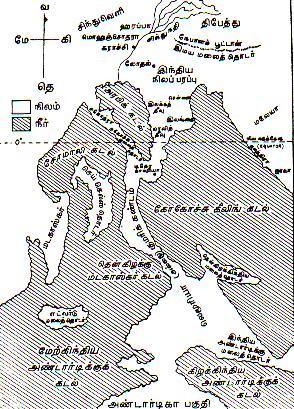
None have been so famous in popular archeology than
the myth of lost continents like Lemuria and Atlantis, so this is where our
case-study starts, click to enter:
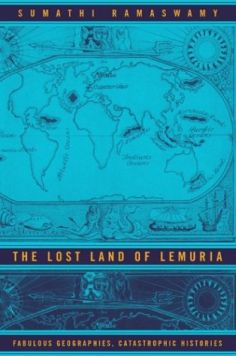
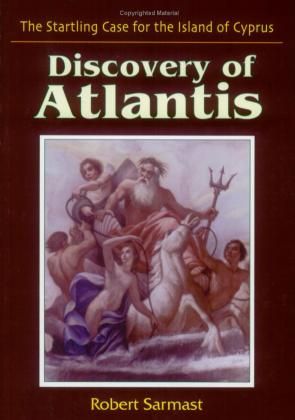
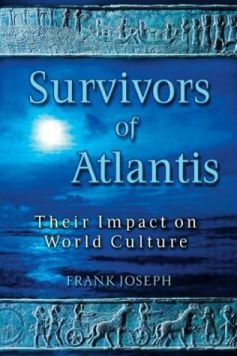
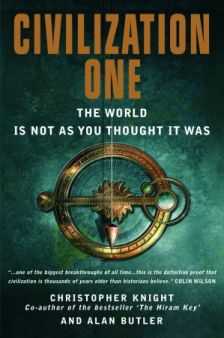
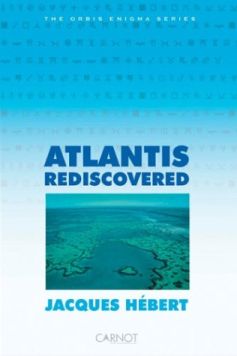
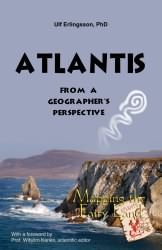
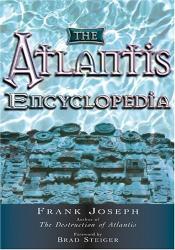
|
|
||
For updates
click homepage here